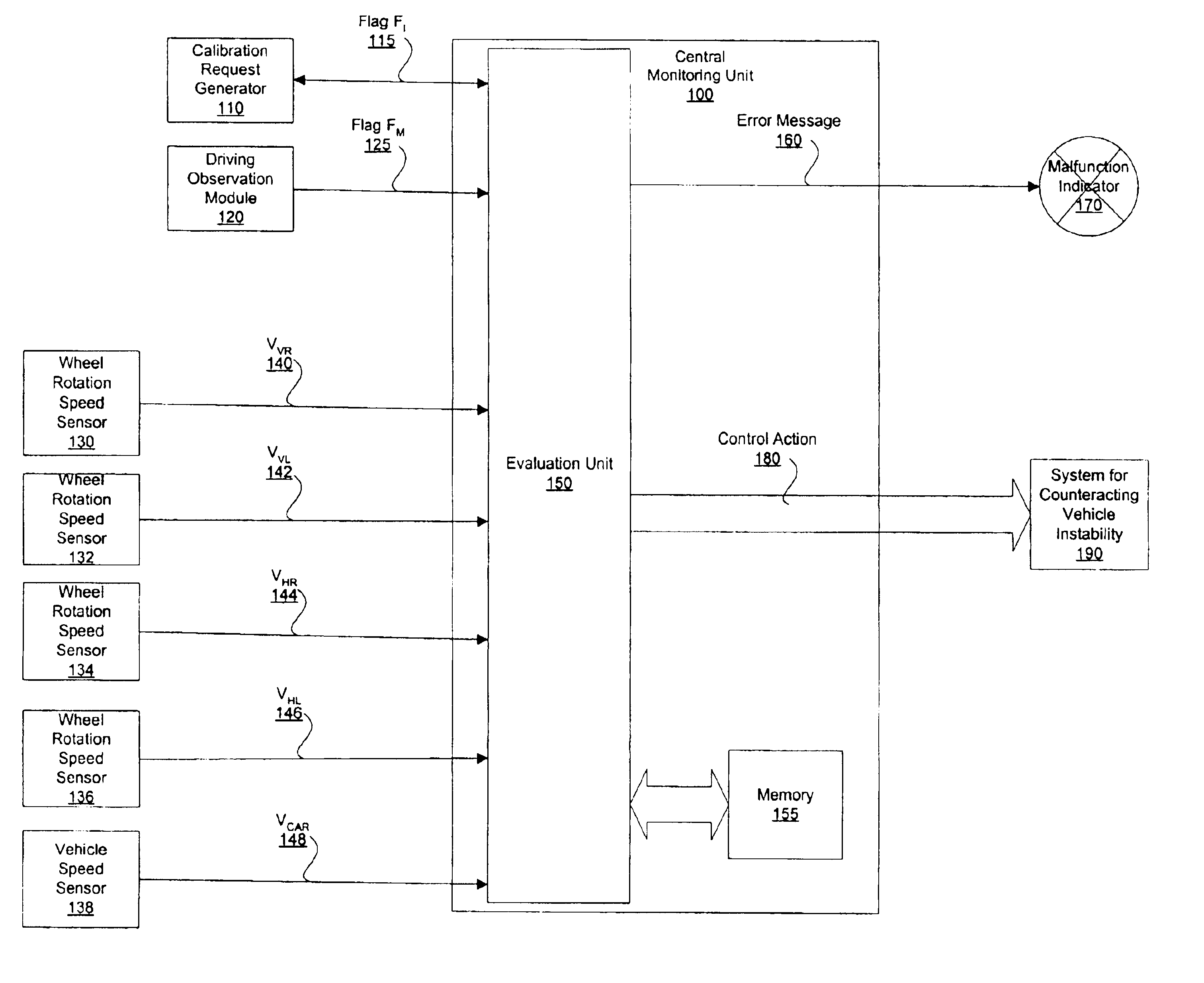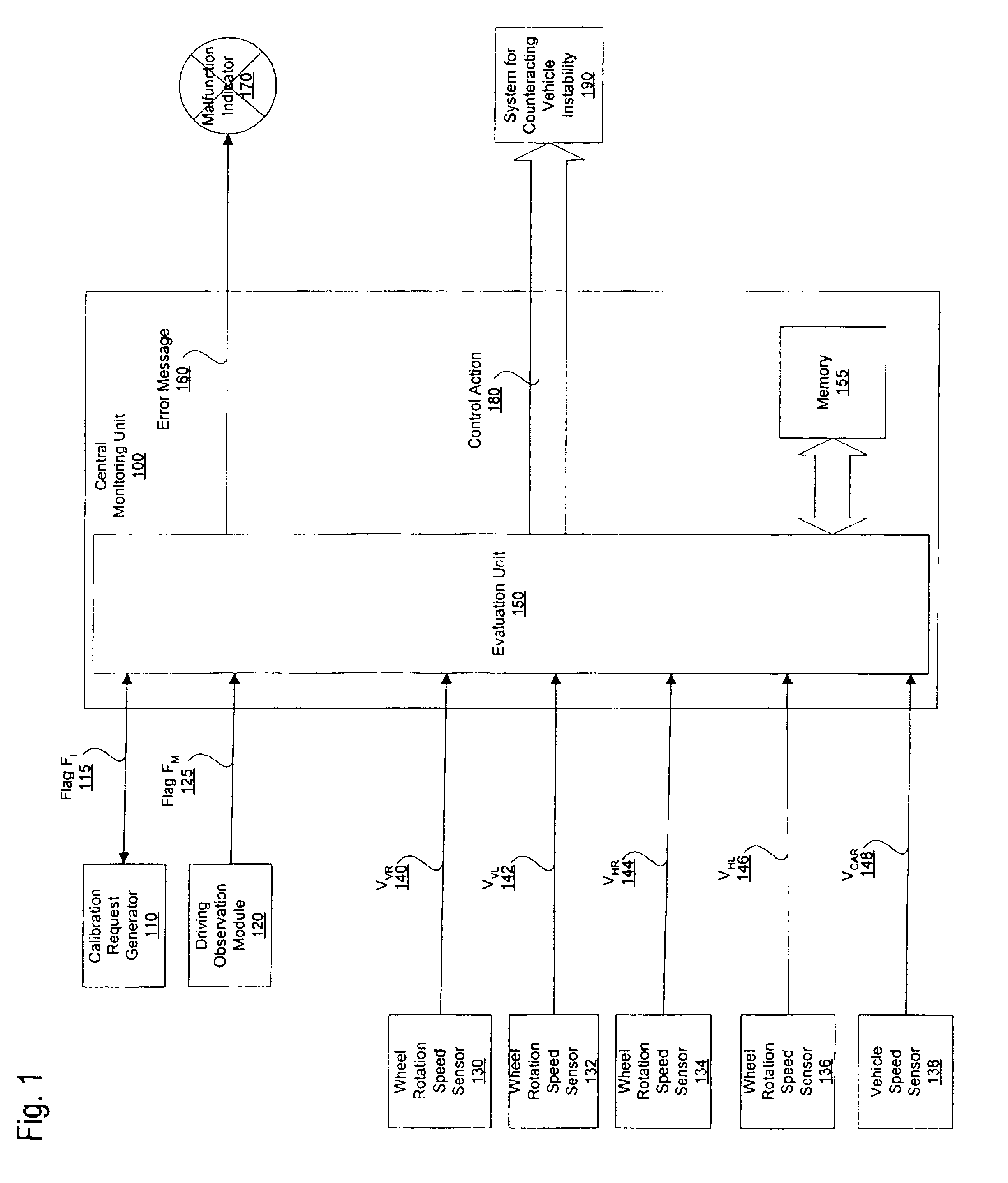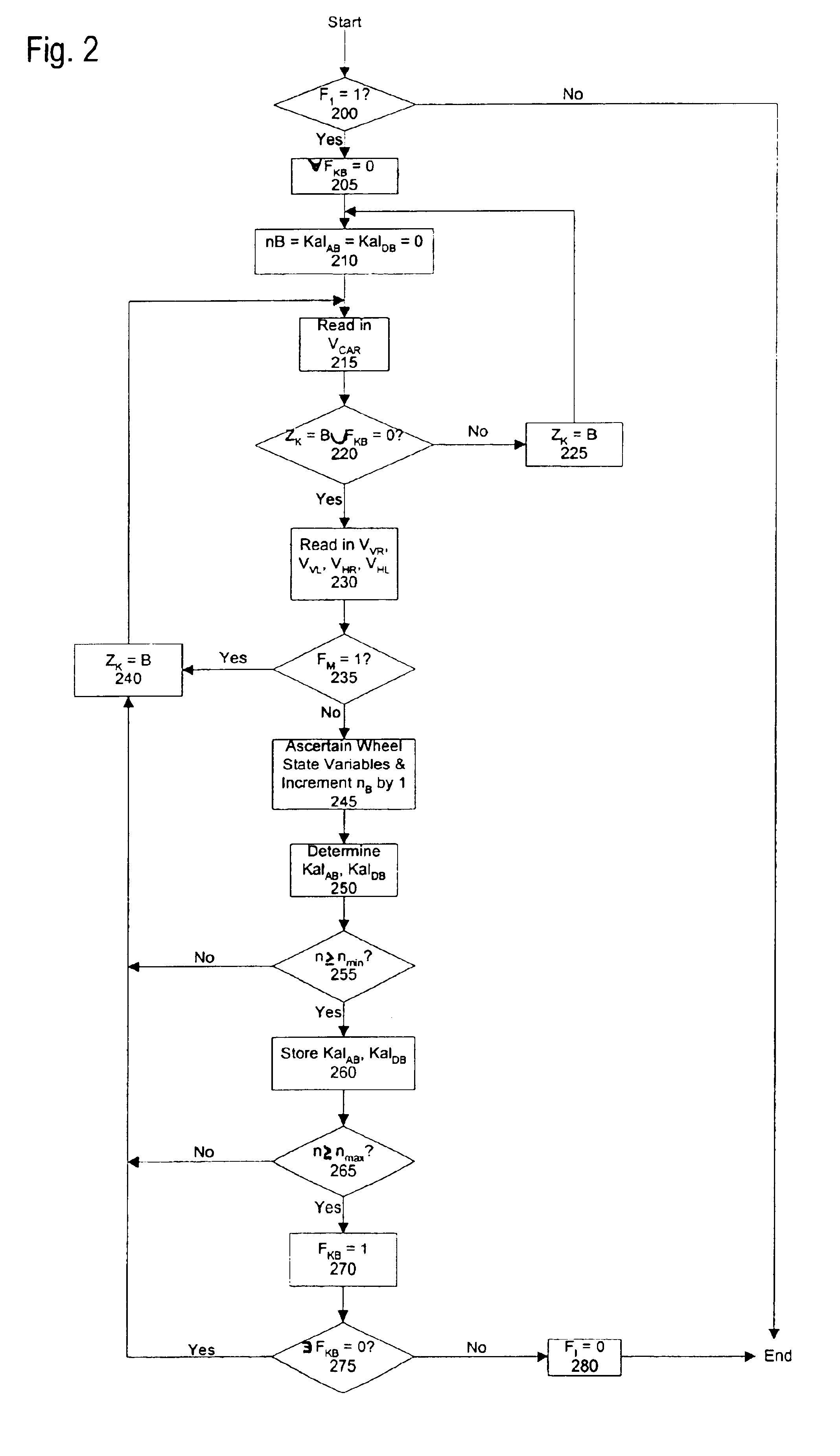Adaptive EEPROM storage system for tire pressure loss detection
a technology of tire pressure loss and storage system, which is applied in the direction of pressure difference measurement between multiple valves, instruments, digital computer details, etc., can solve the problems of limited road adhesion, tire pressure loss can have an extremely devastating effect, and the vehicle is no longer controllable, so as to eliminate spikes or brief disturbances
- Summary
- Abstract
- Description
- Claims
- Application Information
AI Technical Summary
Benefits of technology
Problems solved by technology
Method used
Image
Examples
Embodiment Construction
[0024]FIG. 1 shows an exemplary embodiment for monitoring of a vehicle having four tires. An adaptation of the example to a vehicle having additional tires is certainly possible, but not necessary for presentation of the example. For acquisition of the monitoring parameters necessary for monitoring, each wheel equipped with a tire possesses a wheel rotation speed sensor (130 through 136) for ascertaining the wheel rotation speed. From these wheel rotation speed sensors (130 through 136), the wheel rotation speed variables vVR (140), vVL (142), vHR (144), and vHL (146), which represent the wheel rotation speeds, are forwarded to central monitoring unit 100. To complete the driving-dynamics variables for monitoring, monitoring unit 100 reads out of a corresponding system 138 a variable vcar (148) representing the vehicle speed. In block 150, tire state variables ΔvA, ΔVD which represent the tire state of the wheels are ascertained from these read-in values.
[0025]An initialization, whi...
PUM
| Property | Measurement | Unit |
|---|---|---|
| speed | aaaaa | aaaaa |
| time | aaaaa | aaaaa |
| wheel rotation speeds | aaaaa | aaaaa |
Abstract
Description
Claims
Application Information
 Login to View More
Login to View More - R&D
- Intellectual Property
- Life Sciences
- Materials
- Tech Scout
- Unparalleled Data Quality
- Higher Quality Content
- 60% Fewer Hallucinations
Browse by: Latest US Patents, China's latest patents, Technical Efficacy Thesaurus, Application Domain, Technology Topic, Popular Technical Reports.
© 2025 PatSnap. All rights reserved.Legal|Privacy policy|Modern Slavery Act Transparency Statement|Sitemap|About US| Contact US: help@patsnap.com



